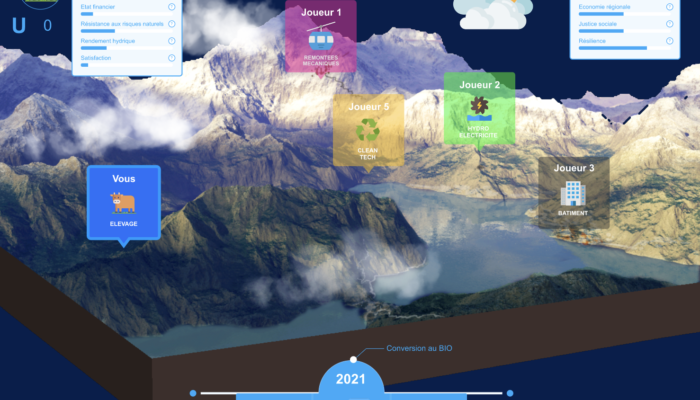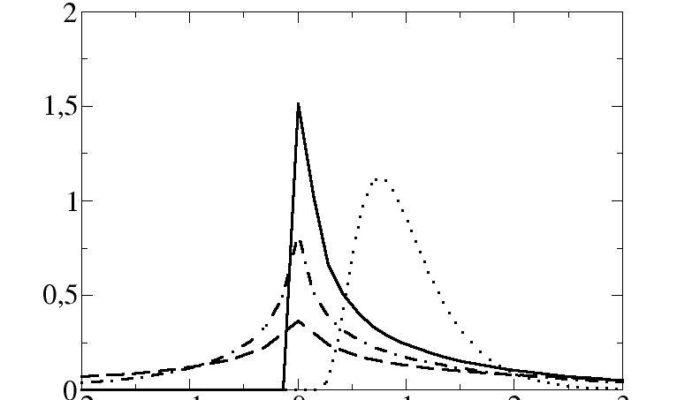Lily took a nice break during the Christmas season, but quickly restressed, and asked: Everytime I take some time off work, I feel guilty I did afterwards. Should l simply keep working continuously? Dear Lily, I would keep working continuously if I were you. I mean, how else are you going to finish your research, write those papers, complete that funding request, prepare a new undergrad course, se ...[Read More]
Hydrological Sciences
Designing a video game – a new scientific experience
“We are in 2050. In 2020, a multi-disciplinary team of scientists and of actors from the Swiss mountains have launched the digital interface MOUNTAINCRAFT. The impact of the launching was immediate: collectivities, socio-economic actors, people living in the area adopted the tool and started implementing adaptation measures to cope with climate change (…). Ultimately, the tool spread across ...[Read More]
Geodynamics
New Year’s Resolutions
Hello everyone and a very belated Happy New Year to y’all! We are back completely refreshed from our little break and ready to posts countless of blog posts! Of course, posting blog posts is our number one New Year’s resolution, but the EGU Geodynamics Blog Team also has a couple of others. Happy 2020! Iris van Zelst 1. Take (all my) holidays (for a change) 2. Go to the theatre a lot a ...[Read More]
Nonlinear Processes in Geosciences
NPG Paper of the Month: “On fluctuating momentum-exchange in idealised models of air-sea interaction”
This month the NPG Paper of the Month award is achieved by Achim Wirth for his paper “On fluctuating momentum-exchange in idealised models of air-sea interaction” (https://www.nonlin-processes-geophys.net/26/457/2019/). Achim tells us about the importance of the results achieved with this paper for investigating the energy coupling between the ocean and the atmosphere. Achim obtained his PhD at th ...[Read More]
Cryospheric Sciences
Water plumes are tickling the Greenland Ice Sheet
7 meters of sea-level rise – what you would get if the whole Greenland Ice Sheet melted. But the tricky question is: how much of this ice will be melted in the next decades, and how fast will it occur? This piece of information is critical in order to plan for present and future populations living in coastline areas, all around the world. How much and how fast can the Greenland Ice Sheet melt ? In ...[Read More]
Stratigraphy, Sedimentology and Palaeontology
County Clare, Ireland: A World-Class Geological Locality
By John Counts and Emma Morris. Europe has a wide variety of interesting sites for geologists, including areas with scientifically interesting formations, amazing scenery, and classic outcrops, many of which are recognized for their international geological significance and are designated as UNESCO Global Geoparks. Rarely, however, do all of these factors come together in such a spectacular way as ...[Read More]
Tectonics and Structural Geology
Beyond Tectonics: How mountain building shaped biodiversity
This edition of “Beyond Tectonics” is brought to you by Lydian Boschman. Lydian is a postdoctoral researcher at ETH Zürich. She has a background in geology and plate tectonic reconstructions, but now works with a group of biodiversity modelers of the Landscape Ecology group at ETH, bridging the gap between geology and biology. In her research, she focuses on the uplift history of the Andes, and ho ...[Read More]
Seismology
Hackathon: when ideas happen
You live in a developing country and wish for access to safe drinking water [1]. Or, you are at the supermarket and want to jump the endless line at the checkout [2]. Maybe you are a business woman and want to confidently represent yourself as the professional you are [3]. Whether it be inspired by the best of intentions or simply the laziness of a shopper, an idea worth developing always h ...[Read More]
Seismology
Hackathon in Zurich – ETH Team
A colleague, external partners and I organized a hackathon on permafrost which took place from 28/11/2019 to 01/12/2019. We tried not to follow the traditional competition-like hackathon approach, but wanted to foster interdisciplinary knowledge exchange and collaboration through working jointly on a predefined dataset. We targeted to bring together computer and environmental scienti ...[Read More]
Seismology
Hackathon in Vienna – IMGW Team
The whole idea of a Hackathon in Science came to me a couple of years ago, when I first read the AgileScientific blog written by Matt Hall. I figured that such an event is perhaps the most optimal way to generate and develop ideas in rapid time. Then, after I participated in the Ready2Order Hackathon in Vienna, my colleagues and I decided that the time has come and we need to make it happen ...[Read More]










